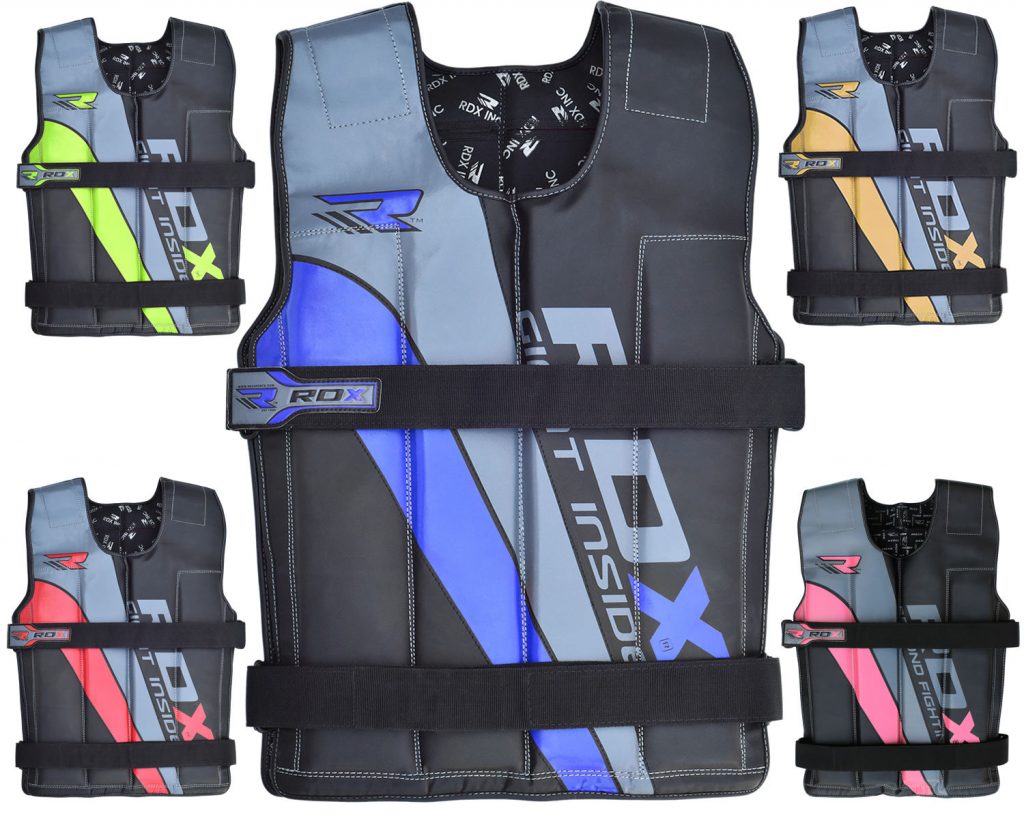Weighted vests are the most versatile and effective equipment for ultimate fitness and resistance training of the full body.
Weighted vests calm the nervous system of the user by applying deep pressure on the body. This pressure results in the controlled movement, better attention span, and reduced agitation. They are also used for trunk stability during dynamic loading and movements.
You can either wear them over the regular clothing. They have the weights attached in such a way that they are not visible from the outside.
You can buy a customizable adjustable weighted vest here:
Who Can Wear Weighted Vests?
You can wear a weighted vest o build muscles, amp up, lose weight and spice up your workout routines.
Apart from their athletic benefits, weighted vests are the smart tools to deal with stress in individuals who have Tourette’s syndrome or anxiety.
Medical practitioners often recommend weighted vests for the adults and children who have:
- Sensory-processing disorders like autism and attention-deficit disorder
- Movement disorders like ataxia, dystonia, and Parkinson’s disease.
Safety Guidelines For Weighted Vests
Weighted vest training is the best way to enhance the explosive speed and power. However, incorrect use of weighted vest can lead you to deep injuries.
Hence, we have devised a safety plan for you to get the most out of your weighted vest training: safely!
1. Use 10{317a7769e272dec17b69bda26c6a5a4c5e6799efcd8a85f72cb552b76862c2b9} Rule
This one is the first and foremost rule to consider before buying a weighted vest. One size does not fit all so select the weight of weighted vest very carefully. The maximum weight of the weighted vest must not exceed the 10{317a7769e272dec17b69bda26c6a5a4c5e6799efcd8a85f72cb552b76862c2b9} of your body weight.
For a 150-pound athlete, the maximum limit for the external load in the weighted vest is 15 pounds. Various weighted vests like those by RDX have adjustable weights to suit your weight class.
2. Training Care
While decelerating during the speed training routine, athletes face the greatest risk of injury. The external loading of the weighted vest can put you in danger especially while bending the knees and lowering the body.
3. Your Motto: Speed
While wearing a weighted vest, remember that your ultimate goal must be speed, not endurance. Contrary to maximum speed training tools, a weighted vest is the only weight accessory that won’t let you compromise the form.
When you are vested up, the fatigue rate of speed muscles is pretty high. Kurt Hester, Louisiana Tech director of sports performance, recommends performing 3-5 reps of 20-yard weighted sprints.
Related: 5 Tips to Improve Speed
4. Vest-To-Rest Ratio
In a weighted vest training, there is an optimum vest-to-rest raion that you can follow. For the free sprints, it is 10:60 i.e. rest for 60 seconds for every 10-yard sprint.
If you are into the speed training, the ratio becomes 10:80 i.e. 80 seconds of rest for every 10 yards.
5. Take It Off After Training
Mike Brungardt, the retired San Antonio Spurs strength coach, recommends to take off the weighted vest at the end of speed sessions. This way, an athlete will get a feeling of being quick. How?
When you are wearing a weighted vest, you need to exert more ground force to generate an explosive movement. Once you have trained enough to fire the speed muscles in an explosive manner, it becomes easy for you to do the same without a weighted vest.
Wearing a weighted vest makes an exercise/drill extremely difficult by increasing your body weight. Challenge your body with a weighted vest without bothering about those barbells and dumbbells.

